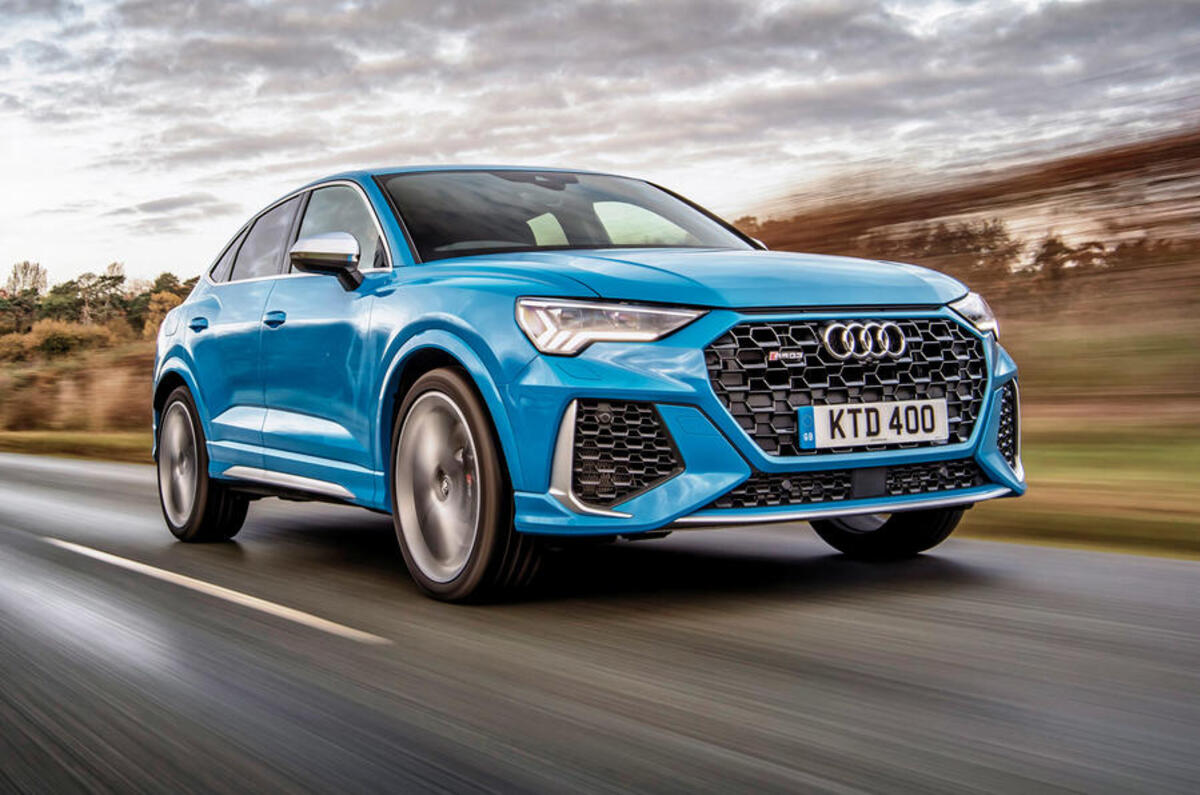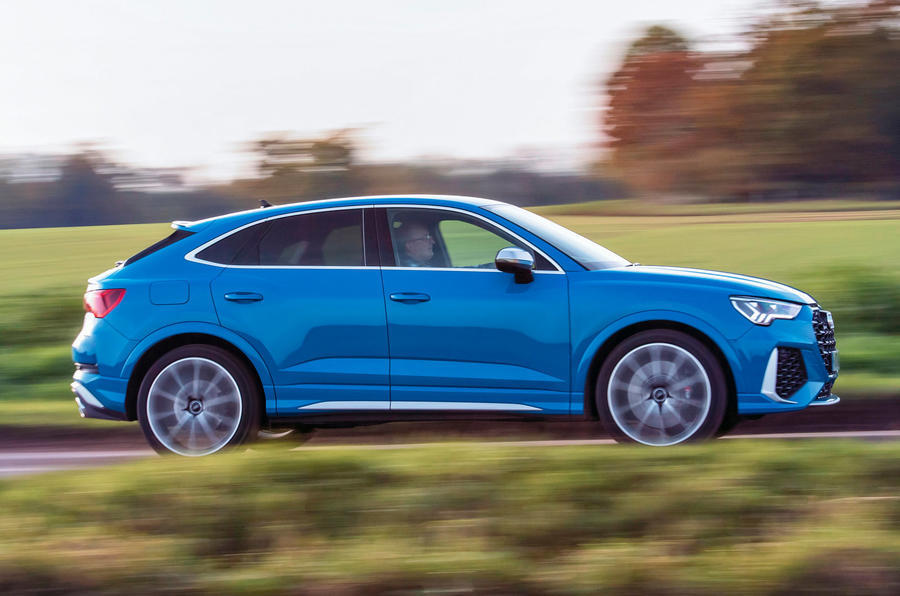This latest addition to Audi Sport’s growing stable of RS models is also one part of a dual-pronged attack on the small performance SUV market. While the Audi RS Q3 should appease those wanting a little extra headroom for rear passengers, the Sportback earns extra style points with its sloping rear end.
These kinds of SUV-cum-coupés might not be your thing, but they clearly have appeal: Audi expects more than 60% of UK RS Q3 sales to be of the Sportback variant, which has a 45mm lower roofline to carve out a more purposeful stance. It also gains a bespoke rear bumper, diffuser and wing to help set it apart from the already aggressively styled RS Q3. Huge twin exhausts help on that front, too.
Looks aside, the two cars are mechanically identical, with the same firecracker turbo five-pot as the first-generation Audi RS Q3 (2012-2016) and the current Audi TT RS. A weight loss regime sees the engine tip the scales at some 26kg less than its predecessor, thanks to the use of an aluminium crankcase and hollow bored crankshaft. The whole car weighs in at 1700kg, besting both the Porsche Macan Turbo and BMW X4 M40i.
Power and torque have been boosted to a healthy 395bhp and 354lb ft, or enough to hit 62mph from a standing start in 4.5 seconds, and top speed is restricted to 155mph - though ask nicely and Audi will up that figure to 174mph. Up to 85% of the available torque can be channeled to the rear axle through a seven-speed automatic gearbox and Audi’s Quattro permanent all wheel drive system. Should the standard brakes not be up to the task, an upgrade to ceramics is available - though the number of RS Q3s that will ever see any track work is surely very low.








































































